Trust Coastal Property Restoration For Rapid Relief And Peace Of Mind
Swift Water Damage Cleanup and Restoration
Water Damage Restoration in Ridgeville, SC
- Dealing with a devastating water-related event in your home or business is a truly traumatic experience. What starts as a small leak can quickly escalate into a situation where your property is flooded with water. Your most cherished belongings and important business documents are ruined. You're left with a catastrophe on your hands, and with every minute that passes, things seem to get worse. Within 24 hours, the most important people in your life are now at risk because of compromised water containing harmful bacteria and allergens.
- If you've never experienced the effects of water damage, be thankful. But those who have had to endure such an unwelcome experience know first-hand how important it is to get the water cleaned up ASAP. That's where Coastal Property Restoration swoops in to save the day. From roof leaks and busted pipes to sump pump malfunctions and natural disasters, Coastal Property Restoration provides water damage clean-up in Ridgeville, SC, when you need professional service and peace of mind most.
Service Areas
A Water Damage Restoration Company You Can Trust
At Coastal Property Restoration, our water damage mitigation company is always prepared to respond quickly to water damage emergencies. That's because we truly care about our customers and never subject them to half-measures or mediocre work. At the end of the day, we're passionate about restoring the lives of home and business owners who are devastated, confused, and looking for trustworthy water damage restoration.
To help achieve that goal, we use years of expertise and modern, state-of-the-art equipment to remove moisture and standing water from your property. In doing so, we can help protect your family or staff while restoring your quality of life. But you've got to act fast - damage from water in your home or business can spread quickly and just affect every aspect of your property, from its roof to its foundation.
So, if you're trying to put the pieces back together after a water loss, it's time to contact Coastal Properties LLC. With one call, our team of experts will arrive at your home or business to remediate your water damage in Ridgeville, SC, using advanced tools, superior drying techniques, and detailed documentation. We aim to restore your property to its pre-loss condition so you can return to living a normal life again.
The Coastal Property Restoration Process
Our team of licensed and insured water damage clean-up professionals uses a streamlined process to address your needs ASAP:
- Assess: We assess the extent of your water damage by conducting a thorough inspection.
- Mitigate: Our technicians get to work quickly to mitigate and prevent further damage to your home, business, and belongings.
- Recover: Our water damage restoration experts help you recover from your water emergency with a focus on restoring your property to its pre-loss condition.
Dealing with an emergency that needs to be addressed sooner than later? With 24-hour service, we're here for you day and night, no matter how severe your water damage issue may be.
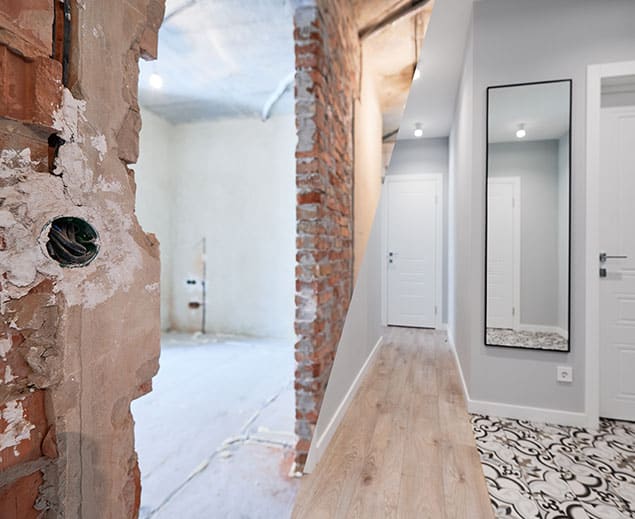
What Causes Water Damage Your Home?
Water is undoubtedly essential for our planet, but it can also be incredibly destructive. Among all the potential disasters that could harm your property, water damage ranks high. It has a tendency to sneak into small, unnoticed areas where it can cause warping and discoloration, whether it's from a severe thunderstorm or a tiny leak. Even a small amount of water can be deceptively expensive, costing thousands of dollars if not addressed immediately.
The most concerning part is that it can happen in an instant, catching you and your family off guard. However, by keeping these common causes of water damage in mind, you can take steps to prevent water from causing damage to your property.
Unsure what might be causing water to enter your home in South Carolina? Call Coastal Property Restoration as soon as you can so our team can come to your property and conduct an inspection.
Get a Quote
In the United States, South Carolina is among the top five states with the greatest number of hurricanes, with a total of 30 making landfall. This accounts for 10.10% of all the hurricanes in the country. While five of those hurricanes were classified as being major (Category 3), smaller hurricanes and even minor rain showers can result in significant water damage clean-up in Ridgeville, SC.
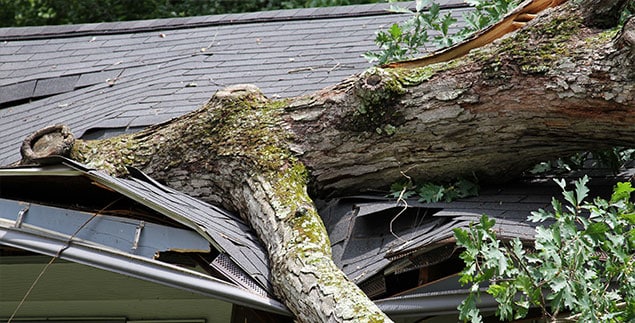
Properly functioning gutters are essential for directing water away from your home, especially during fall leaf season when clogs are common. However, when gutters do become clogged, rainwater can accumulate and flow over the edges, causing potential leaks into your attic, walls, or basement. It's important to ensure your gutters are free of debris to prevent any water damage to your home.
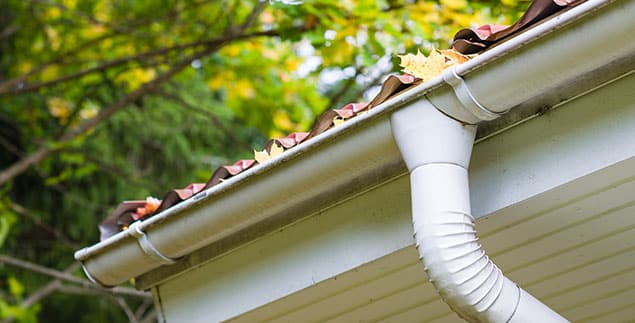
Water heaters that are old or not properly installed have a tendency to develop leaks. Sadly, these leaks can be quite severe and result in the accumulation of several inches of water in your basement or crawlspace.
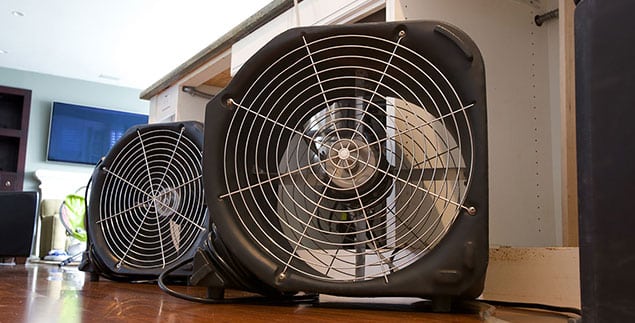
Pipe leaks may start small, but they can have devastating consequences. Whether it's loose-fitting pipes under your kitchen sink or old drainage systems under your home, water from a leak can cause serious damage to your property. Not only can it ruin prized possessions and warp wallpaper, but it can also create conditions for mold growth, even with just a small amount of moisture present. It's crucial to address any leaks as soon as possible to prevent further damage.
Some other common causes of water damage in residential homes include the following:
- Overflows (sinks, bathtubs, toilets)
- Sprinkler Systems (accidents & malfunctions)
- Clogged Drains (hair, grease, dirt, etc.)
- Washing Machines (compromised PVC supply line)
- AC Condensation (clogged condensate line, damaged drain pan)
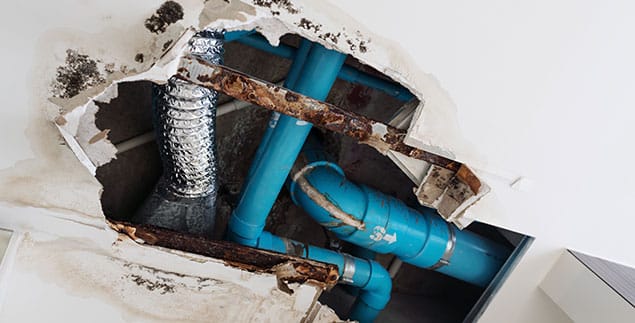
Water Damage in Ridgeville, SC: Restoration vs. Mitigation vs. Remediation
As a reputable water damage restoration company in South Carolina, we get questions all the time from misinformed customers asking what the differences are between restoration, mitigation, and remediation. We get it - to the untrained individual, they all sound about the same. But each serves a special purpose in the process of eliminating water from your home or office.

Water Damage Mitigation
You can think of water mitigation as an emergency response meant to stop and contain water so that it doesn't cause any more damage to your property. Often, mitigation includes an inspection of the damaged area and an advanced water extraction process to ensure a hazard-free workplace.
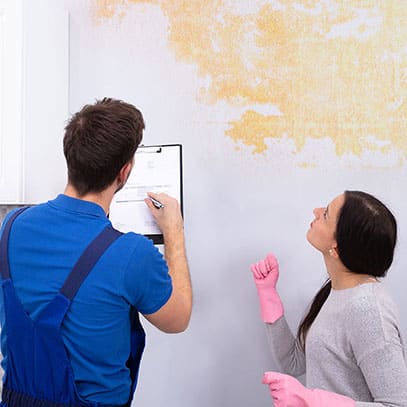

Water Damage Remediation
This stage often involves a detailed clean-up and removal of residual water from the property. Water damage techs will also remove furniture and other items affected by the water damage and dispose of any contaminated materials. During this phase, blowers and pumps may be used to dry areas of the property. Sometimes, boards or tarps are used to protect the property as needed. From there, a final cleaning usually takes place that can include deodorizing and sanitizing items that can be salvaged from water damage. It should be noted that sometimes water mitigation and remediation overlap. For instance, remediating a contaminant from an area of your home might involve mitigating damage to something like a pipe that has burst.
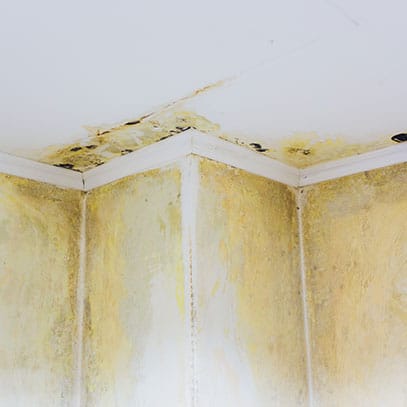

Water Damage Restoration
In this final stage, water damage restoration professionals help ensure that moisture levels in the impacted areas are back to normal. They take care of replacing the damaged drywall, repairing the floors that have buckled, and fixing the ceilings affected by water. Additionally, they clean and restore the items that are still in good condition. All of these measures are taken to bring your property back to its original state before the damage occurred. Think of it like this: Water remediation focuses on completing temporary tasks, while restoration centers around more permanent solutions.
While the water damage clean-up steps listed above might sound interchangeable, each addresses a crucial step in the remediation process. If you're working with a water damage restoration company and they tell you otherwise, know that they're perpetrating a myth. Speaking of myths, here are a few of the most common ones that we have run across in our time as water restoration experts.
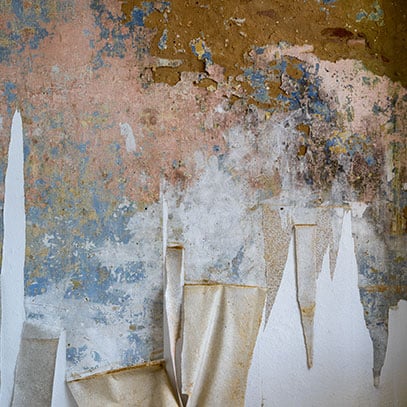
You can think of water mitigation as an emergency response meant to stop and contain water so that it doesn't cause any more damage to your property. Often, mitigation includes an inspection of the damaged area and an advanced water extraction process to ensure a hazard-free workplace.
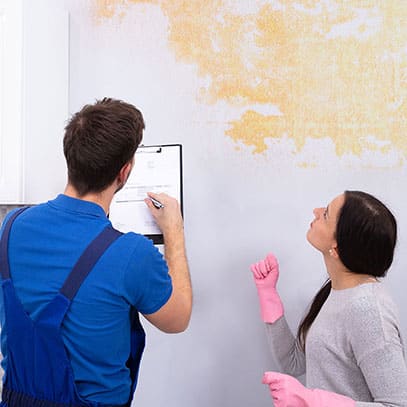
 Call Now
Call Now
This stage often involves a detailed clean-up and removal of residual water from the property. Water damage techs will also remove furniture and other items affected by the water damage and dispose of any contaminated materials. During this phase, blowers and pumps may be used to dry areas of the property. Sometimes, boards or tarps are used to protect the property as needed. From there, a final cleaning usually takes place that can include deodorizing and sanitizing items that can be salvaged from water damage. It should be noted that sometimes water mitigation and remediation overlap. For instance, remediating a contaminant from an area of your home might involve mitigating damage to something like a pipe that has burst.
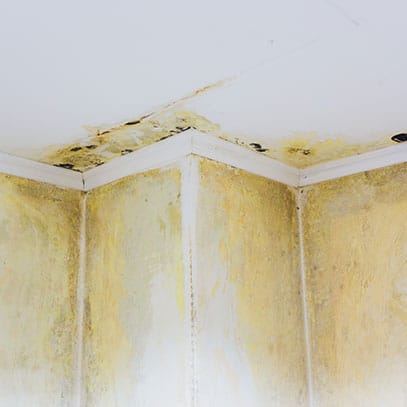
 Call Now
Call Now
In this final stage, water damage restoration professionals help ensure that moisture levels in the impacted areas are back to normal. They take care of replacing the damaged drywall, repairing the floors that have buckled, and fixing the ceilings affected by water. Additionally, they clean and restore the items that are still in good condition. All of these measures are taken to bring your property back to its original state before the damage occurred. Think of it like this: Water remediation focuses on completing temporary tasks, while restoration centers around more permanent solutions.
While the water damage clean-up steps listed above might sound interchangeable, each addresses a crucial step in the remediation process. If you're working with a water damage restoration company and they tell you otherwise, know that they're perpetrating a myth. Speaking of myths, here are a few of the most common ones that we have run across in our time as water restoration experts.
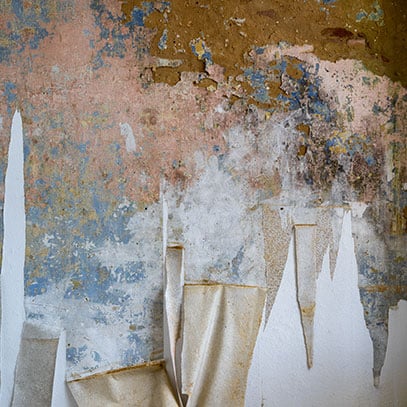
 Call Now
Call Now
Myths About Water Damage Restoration in Ridgeville, SC
When it comes to water damage restoration, there's a lot of information out there that can be misleading or downright incorrect. This can be especially frustrating for property owners who are caught off guard by unexpected leaks or floods. To make matters worse, there are several common myths about water damage that can actually make the problem worse if you're not aware of them. To help clear things up, we've debunked three of these myths below.
It's important to remember that water damage can often go undetected. Water has a sneaky way of hiding in all sorts of nooks and crannies throughout your home, including behind walls, in carpets, under floors, and in ceilings. The problem with these materials is that they're porous, which means they not only hide water, but they also absorb it. Even if it appears that everything has dried out, the moisture that's lurking beneath the surface can still cause serious damage over time.
That's why it's crucial to take action and not let water dry on its own. If left untreated, it won't simply evaporate; it will be absorbed. Fortunately, the expert technicians at Coastal Property Restoration are equipped with top-of-the-line equipment to help locate and eliminate any hidden moisture or trapped water. You can trust us to thoroughly dry out your home and protect it from any further damage.
Dealing with water damage restoration and preventing further damage requires swift action, as time is of the essence. The longer water remains, the more extensive the damage becomes. The response window is narrow, less than 24 hours, and within this timeframe, mold growth may occur, creating an entirely new set of issues. Plus, salvaging materials in your home after prolonged exposure to water is challenging, so the best course of action is to respond immediately to water damage.
We understand that this can be challenging, but working with a reputable water damage cleanup service like Coastal Property Restoration can make all the difference. Our team can respond promptly and efficiently, allowing you to focus on your life while we take care of your home. The bottom line? If you've got water in your home or business, don't waste any time. Call a trusted water damage restoration company ASAP to minimize losses, mitigate damage, and prevent the risk of mold.
The saying, "Everything heals with time," is not a phrase that applies to mold in your home or business. As mentioned above, it's important to act quickly when dealing with water damage, as mold can begin to grow in as little as 24 hours. The musty odor that comes with mold won't stay contained to the affected area; it will eventually spread throughout your entire home.
It's crucial to take the necessary steps to stop mold growth and spread, including proper water extraction, drying, dehumidification, and sanitization. Additionally, any saturated materials, such as couches, carpets, floors, and drywall, must be treated properly to eliminate the musty smell. To ensure your home is fully restored and smelling fresh after water damage, it's best to have a professional clean-up crew go through each step of the process to guarantee no moisture is left behind.

Getting Back to Business: Common Signs of Commercial Water Damage in Ridgeville, SC
Water damage can be a major setback for any commercial property and business, causing loss of revenue and productivity. But fear not; Coastal Property Restoration has got your back with skilled technicians and reliable water damage restoration services. As a savvy business owner, however, it's important for you to stay vigilant and look out for early signs of water damage to your property so you can take action before it becomes a major problem.
Inspect Your Piping
It's important to thoroughly inspect the piping both inside and outside the building. Pay close attention to any signs of oxidation or corrosion around pipe fixtures, and don't forget to check your water heater for rust as well. If you do notice corrosion or rust, it could be an indication of a water leak that needs to be addressed promptly.
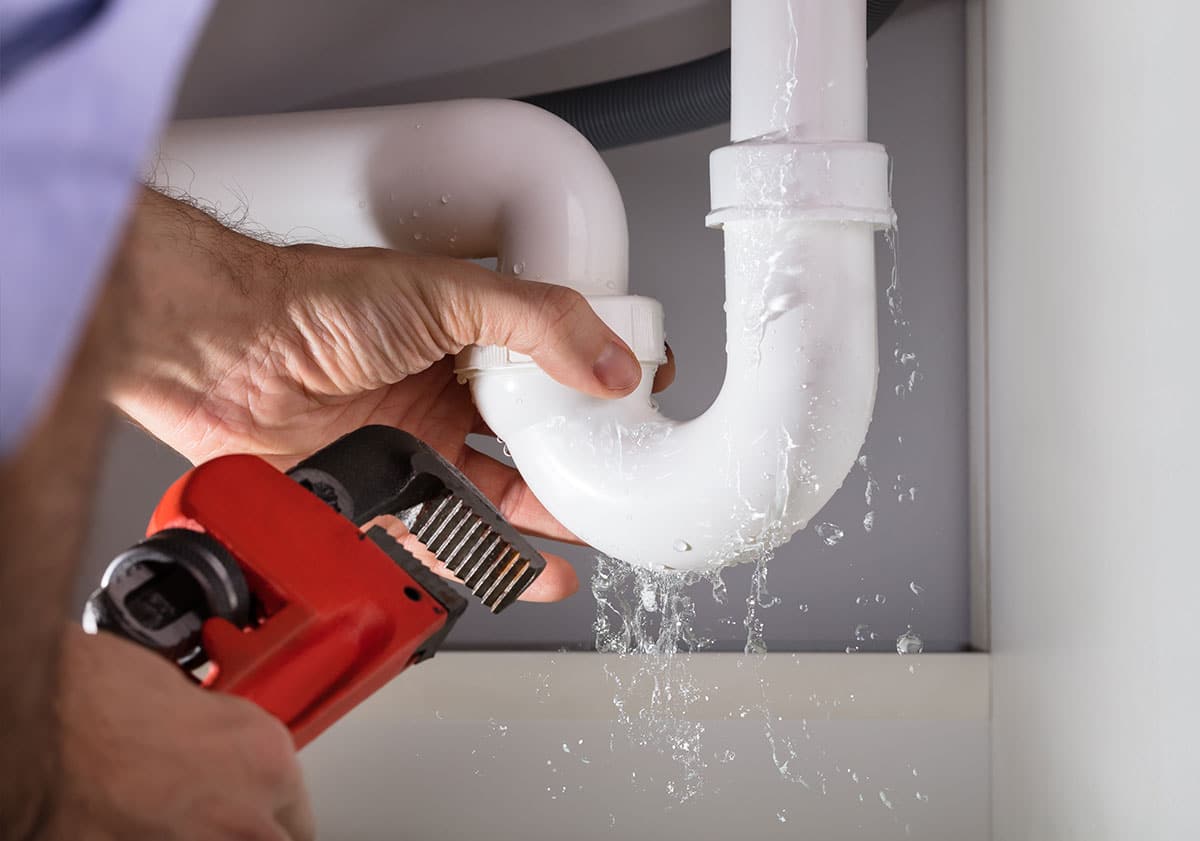
Be Wary of Mold
Mold can begin to grow less than 24 hours after water has compromised your business. If you see any signs of mold growth where there have been leaks, contact Coastal Property Restoration ASAP to diagnose the problem.
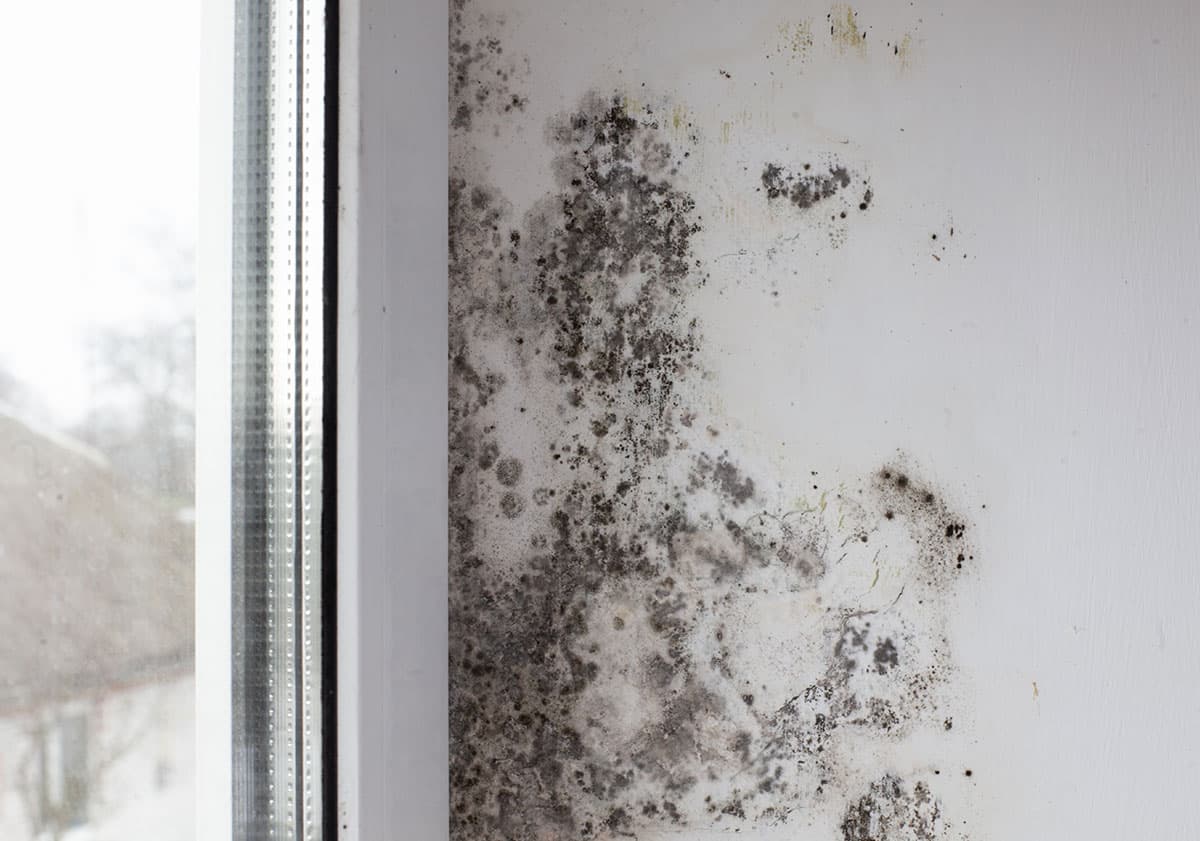
Look for Spotting
Water damage can usually be identified in businesses by dark spots on walls and ceilings, with older damage likely showing rings around the stain. Multiple rings with varying shades may indicate an intermittent problem, where the area has been repeatedly soaked and dried.
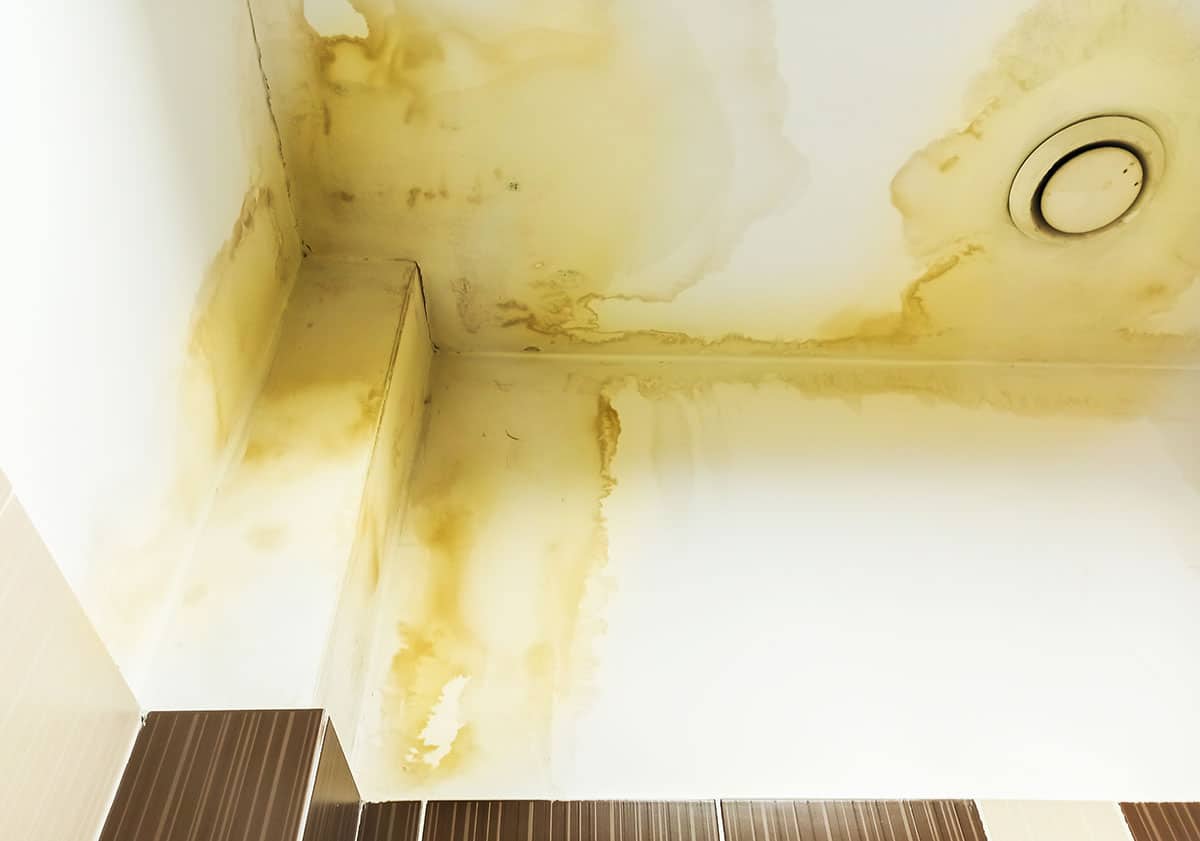
Know Your Property Like the Back of Your Hand
As the owner of commercial property, it's important to stay aware of your building's pipe system. Being knowledgeable about what's old and new, and identifying areas at risk for water damage is key. Areas with a higher potential for leaks, especially during rainstorms, should be monitored closely.

Rusty Appliances
When a commercial property owner observes rust on equipment or AC units of a building, it is highly probable that water damage is the root cause. This could be an indication of an unaddressed old leak in the vicinity. It is crucial for property owners to seek assistance from a specialist to assess the extent of the damage.

It's important to thoroughly inspect the piping both inside and outside the building. Pay close attention to any signs of oxidation or corrosion around pipe fixtures, and don't forget to check your water heater for rust as well. If you do notice corrosion or rust, it could be an indication of a water leak that needs to be addressed promptly.
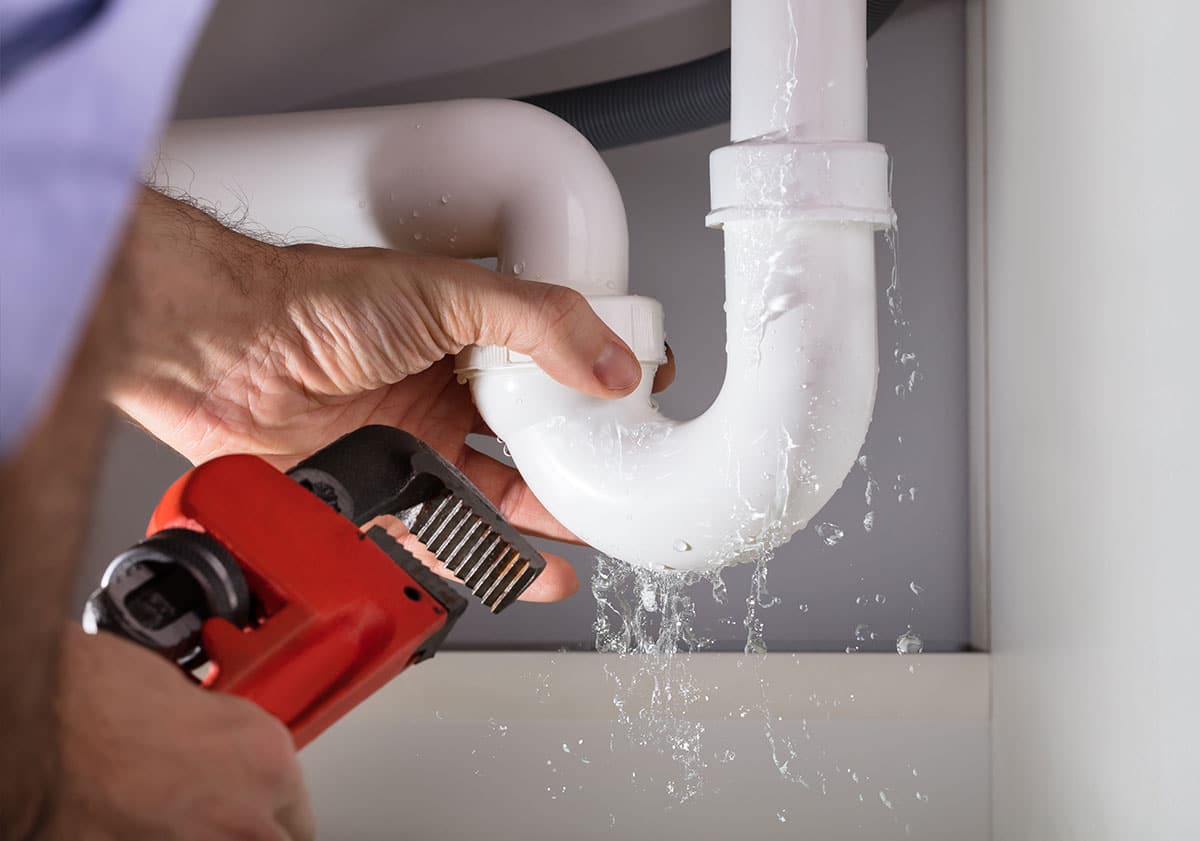
Mold can begin to grow less than 24 hours after water has compromised your business. If you see any signs of mold growth where there have been leaks, contact Coastal Property Restoration ASAP to diagnose the problem.
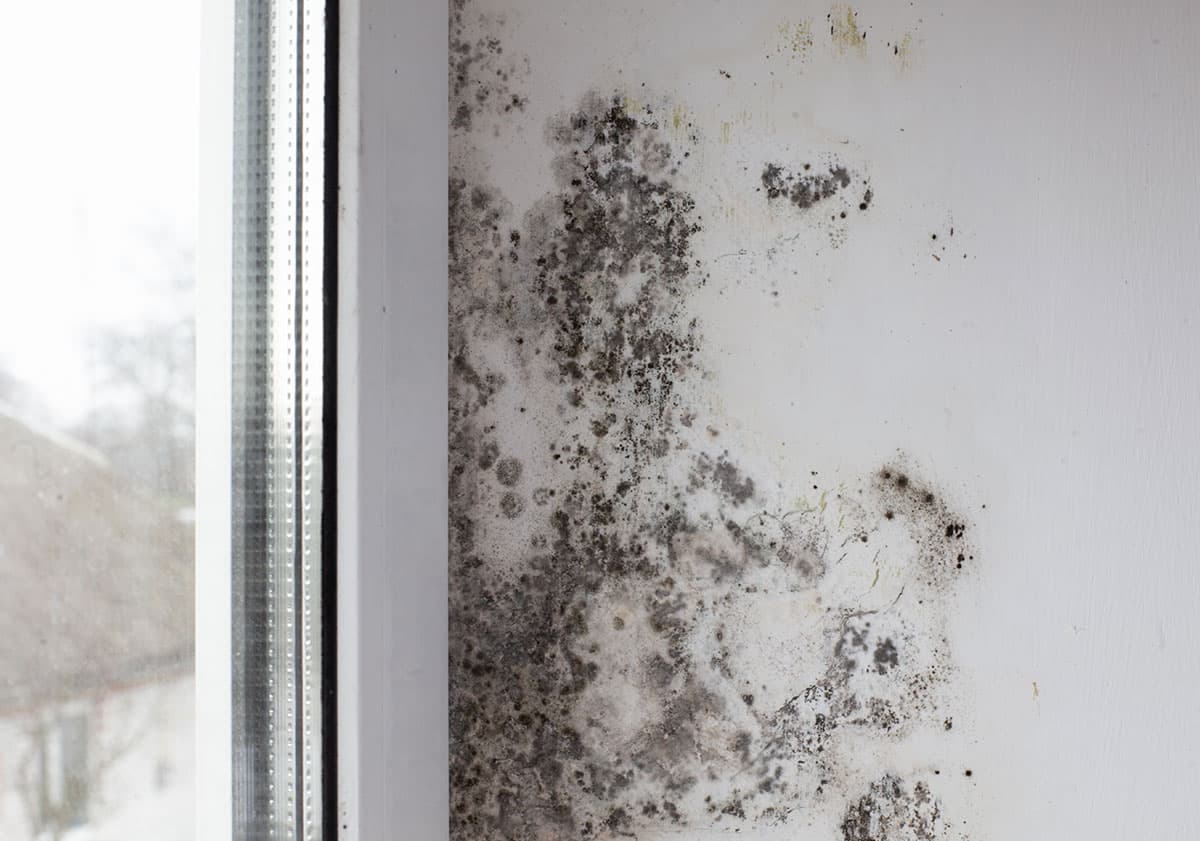
Water damage can usually be identified in businesses by dark spots on walls and ceilings, with older damage likely showing rings around the stain. Multiple rings with varying shades may indicate an intermittent problem, where the area has been repeatedly soaked and dried.
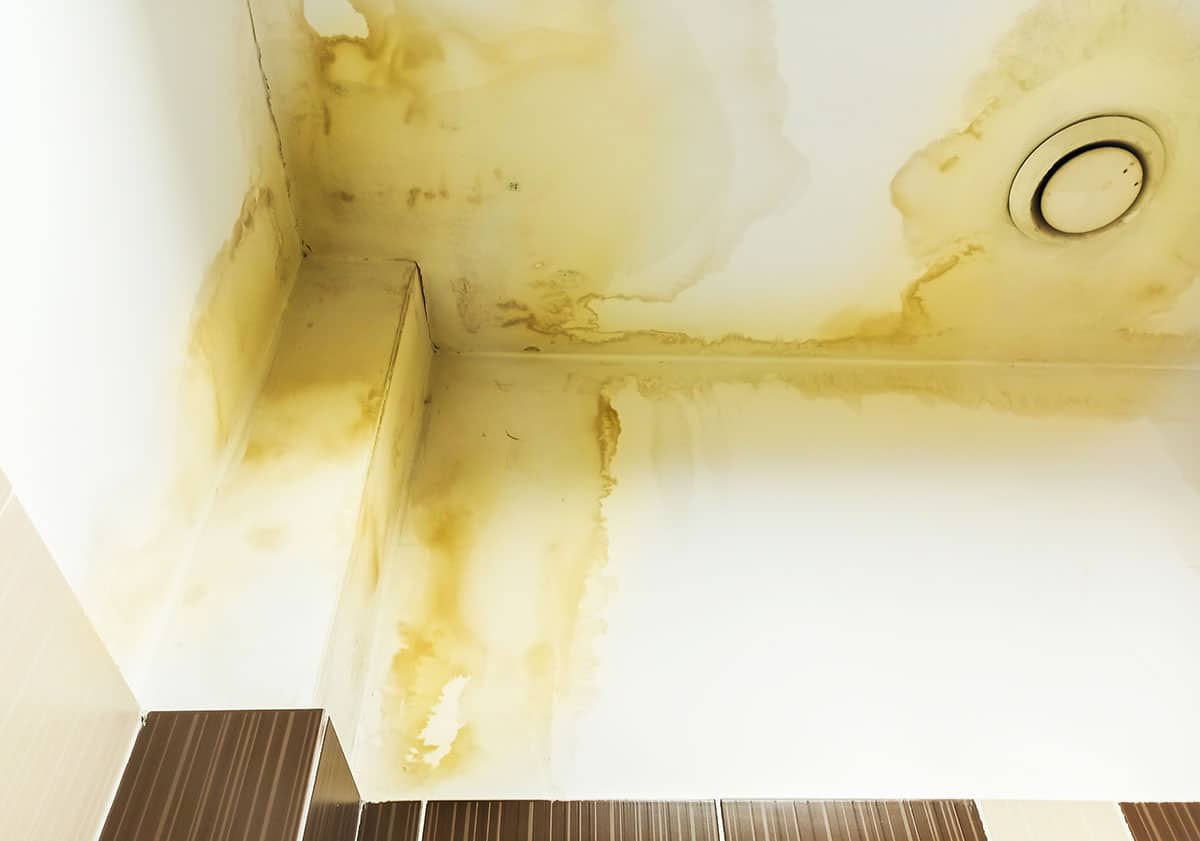
As the owner of commercial property, it's important to stay aware of your building's pipe system. Being knowledgeable about what's old and new, and identifying areas at risk for water damage is key. Areas with a higher potential for leaks, especially during rainstorms, should be monitored closely.

When a commercial property owner observes rust on equipment or AC units of a building, it is highly probable that water damage is the root cause. This could be an indication of an unaddressed old leak in the vicinity. It is crucial for property owners to seek assistance from a specialist to assess the extent of the damage.
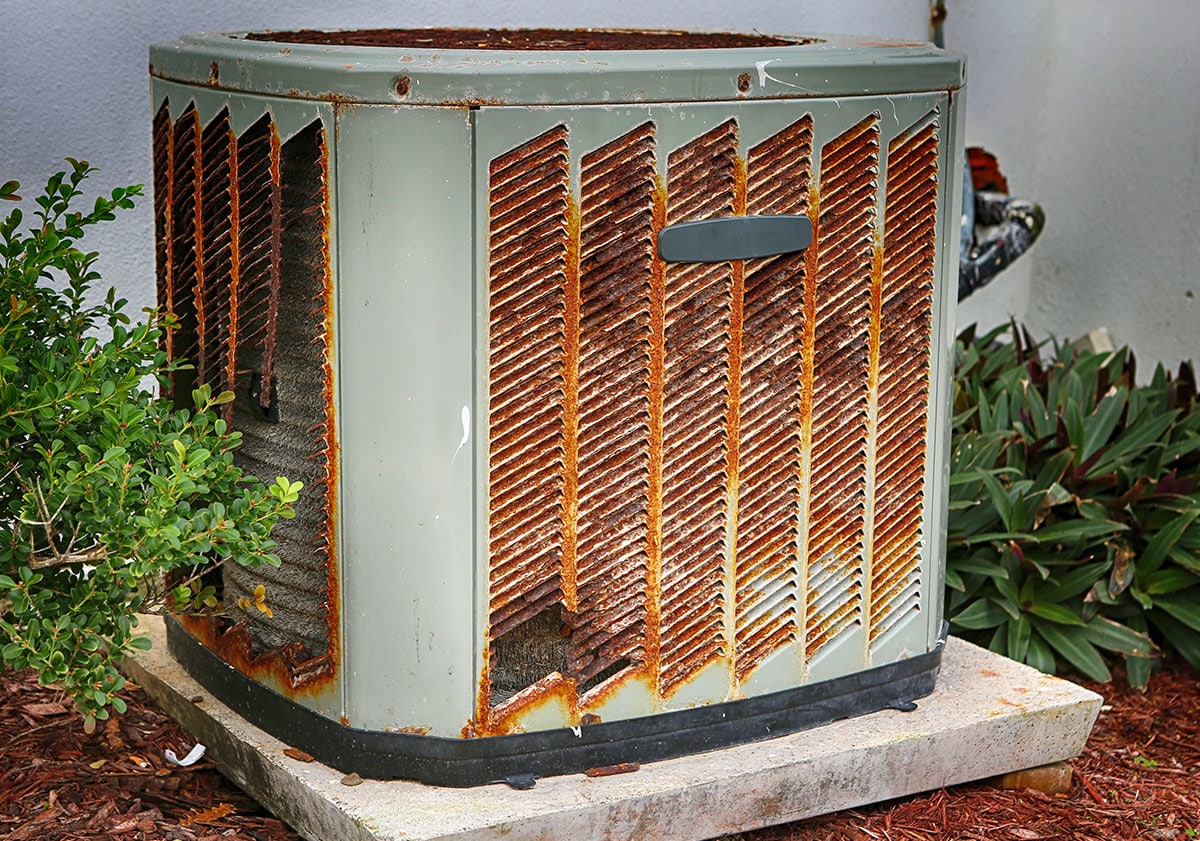
Coastal Property Restoration is Your Local Choice For Water Damage Restoration in Ridgeville, SC
Effective water damage clean-up is an essential process that requires a high level of expertise to ensure your property sustains minimal damage. Selecting the best water remediation company is equally important, especially when it comes to the health of your family or your customers. Whether your kitchen is full of standing water because your dishwasher overflowed or your business is at risk because of an extensive pipe leak, our team of trained and certified experts is only a phone call away, 24 hours a day.
Contact our office to discover the Coastal Property Restoration difference and what separates our water damage mitigation company from others in South Carolina.
Get A Quote
Latest News in Ridgeville, SC
Second phase of Camp Hall Commerce Park campus 4 construction begins in Ridgeville
Bailey Wrighthttps://abcnews4.com/news/local/second-phase-of-camp-hall-commerce-park-campus-4-construction-begins-in-ridgeville
RIDGEVILLE, S.C. (WCIV) — Phase two of construction of the Campus 4 in Camp Hall Commerce Park is underway.The second phase involves the construction of a 1,123,360-sq-ft industrial facility on 110.6 acres of land.“We’re proud of the progress we’ve made on Phase I of this project, and our team is excited to carry that momentum through to Phase II. Camp Hall is an expertly planned, best-in-class park, and we’re honored to be involved in the full development of Campus 4," said Keith Horton, seni...
RIDGEVILLE, S.C. (WCIV) — Phase two of construction of the Campus 4 in Camp Hall Commerce Park is underway.
The second phase involves the construction of a 1,123,360-sq-ft industrial facility on 110.6 acres of land.
“We’re proud of the progress we’ve made on Phase I of this project, and our team is excited to carry that momentum through to Phase II. Camp Hall is an expertly planned, best-in-class park, and we’re honored to be involved in the full development of Campus 4," said Keith Horton, senior project manager at Frampton Construction.
Read More: Clyburn: $25M in federal funding for new railway tracks to support Camp Hall Commerce Park
The Camp Hall project was designed and promoted by Santee Cooper in partnership with the South Carolina Department of Commerce, Berkeley County, Edisto and Berkeley Electric Cooperatives, the South Carolina Power Team, the Charleston Regional Development Alliance, and the South Carolina Ports Authority.
“The full development of Campus 4 at Camp Hall Commerce Park gives Portman Industrial a substantial land position with state-of-the-art logistics facilities in the highly constrained Charleston market. Campus 4 provides us with the ability to target a diversity of tenants desiring smaller, single-load facilities that have been the hallmark of Charleston’s tenant demand,” says John Gaskin. “Campus 4 also fills a void in immediate supply of cross-dock logistics facilities of +/- 500,000 square feet and +1,000,000 square feet, which are in short supply in Charleston and desired by present and future port customers.”
Frampton Construction Company, LLC. is leading the construction project.
Read More: McMaster touts new Volvo Car University, electric vehicle investment in Ridgeville
Phase one of the Campus 4 construction is still underway. It includes three industrial facilities with a combined 940,000-sq-ft. That phase is over 60% leased at this time.
Last June, nearly two dozen miles of new railway track were given federal funding to the tune of $25 million.
The money was slated for the South Carolina Department of Commerce's Palmetto Railways division to construct approximately 22.7 miles of new track and related facilities. This will connect the Camp Hall Commerce Park in Ridgeville to the CSX multi-state rail network.
7 charged after investigation into cockfighting, illegal gambling around Ridgeville
Matt Dillanehttps://abcnews4.com/news/local/cockfighting-illegal-gambling-ridgeville-crime-charges-animal-cruelty-lowcountry-south-carolina-wciv
RIDGEVILLE, S.C. (WCIV) — Seven people have been arrested following an investigation into gamecock fighting and illegal gambling in and around Ridgeville.On Friday, authorities said the individuals were arrested on Wednesday after the investigation by a joint team of federal, state, and local law enforcement officers.Those arrested are facing a slew of charges following an indictment, with counts for some including animal fighting venture, illegal gambling operation, conspiracy to violate animal fighting venture, and fals...
RIDGEVILLE, S.C. (WCIV) — Seven people have been arrested following an investigation into gamecock fighting and illegal gambling in and around Ridgeville.
On Friday, authorities said the individuals were arrested on Wednesday after the investigation by a joint team of federal, state, and local law enforcement officers.
Those arrested are facing a slew of charges following an indictment, with counts for some including animal fighting venture, illegal gambling operation, conspiracy to violate animal fighting venture, and false statement to a federal law enforcement officer.
The individuals, and their respective charges, are listed below:
Officers have placed a legal hold on the property involved following the indictment. Authorities also seized cash and three vehicles that they said were used in connection with the operation.
The United States Department of Agriculture (USDA) Office of Inspector General, South Carolina Law Enforcement Division (SLED), and Dorchester County Sheriff’s Office worked together to investigate this incident. Assistant United States Attorney Chris Lietzow will prosecute the case.
Marty Irby, executive director of Animal Wellness Action, a nonprofit organization that works to prevent cruelty to animals through public policy, issued the following statement on the arrests:
We applaud the local, state, and federal authorities for taking action and arresting these suspects on cockfighting related charges and hope they will be prosecuted to the fullest extent of the law. Rep. Nancy Mace has been a tremendous leader on this issue and we applaud her continued work to crackdown against this egregious abuse as well.
Cockfighting runs rampant in South Carolina as we've seen in case after case over the past few years. This gruesome blood-sport is not only cruel but is a serious risk to both human and poultry health as fighting birds can easily spread Avian Influenza, a disease that has recently appeared in at least 35 states in the U.S. It’s time to stamp out this form of staged cruelty.
Data center project planned in Ridgeville, South Carolina
Dan Swinhoehttps://www.datacenterdynamics.com/en/news/data-center-project-planned-in-ridgeville-south-carolina/
A “significant” data center development is coming to Ridgeville, South Carolina.According to Dominion letters sent to the Public Service Commission of South Carolina, a company called Mallard, LLC is proposing ‘Project Dawson’; a data center development on land near Research Center Drive in Ridgeville, in South Carolina’s Dorchester County.The site, located to the northeast o...
A “significant” data center development is coming to Ridgeville, South Carolina.
According to Dominion letters sent to the Public Service Commission of South Carolina, a company called Mallard, LLC is proposing ‘Project Dawson’; a data center development on land near Research Center Drive in Ridgeville, in South Carolina’s Dorchester County.
The site, located to the northeast of Charleson, will have its own substation. Information about the site’s planned capacity – along with timelines – has been redacted.
Dominion said Mallard was investing a “significant” amount of capital into the project, which will represent a “substantial load” for the energy firm.
As reported by the Post and Courier, the company is being offered a special "economic development rider" rate that amounts to 6 cents for every kilowatt hour of power – half of what residential customers pay.
The SC Public Service Commission has to review any such deals, but is yet to set a meeting date.
John Truluck, Dorchester County's economic development director, told the publication he has not heard of Mallard LLC.
The Post notes the data center's location is the same parcels where a company operating as Autumn Timber LLC previously proposed to invest $510 million on an unspecified development at the Pine Hill Business Campus off Highway 17A.
Autumn Timber previously used ‘Project Dawson’ on a permit application with the SC Department of Health and Environmental Control. Dorchester County Council last month approved tax breaks, a water-service agreement, and a land deal for Autumn Timber – which has previously filed plans under ‘Project Orchid’.
Dorchester County officials previously agreed to sell about 268 acres it owns at Pine Hill Business Campus to Autumn Timber for $5.84 million.
The Post linked Mallard to Google, as the manager of the shell company is one David Thomas. A Google director of corporate strategy named David Thomas has previously been named on other Google-affiliated public documents.
Google currently operates a South Carolina data center campus in Moncks Corner, around 20 miles east of Ridgeville. The company recently acquired another 140 acres in the area.
Elsewhere in South Carolina, a company hiding behind the shell company Starskey LLC is proposing ‘Project Sabal’, which is reportedly a data center development outside Augusta in Graniteville, Aiken County. County officials granted tax incentives to Starskey earlier this year. The company reportedly acquired around 573 acres in the Sage Mill Industrial Park for $19.2 million last year. It's unclear if Starskey/Sabal are linked to Google or Mallard.
Google confirms it is behind Project Dawson data center campus in South Carolina
Dan Swinhoehttps://www.datacenterdynamics.com/en/news/google-confirms-it-is-behind-project-dawson-data-center-campus-in-south-carolina/
Google has confirmed it is behind a data center development project in Ridgeville, South CarolinaThe search and cloud company has also received permission to develop three more data centers in Belgium.Google confirmed to expand in South CarolinaGoogle has revealed itself to be behind the Project Dawson data center proposals in South Carolina.“The Dorchester County Economic Development (DCED) office, which serves to support economic growth in the county, confirms a relationship with G...
Google has confirmed it is behind a data center development project in Ridgeville, South Carolina
The search and cloud company has also received permission to develop three more data centers in Belgium.
Google confirmed to expand in South Carolina
Google has revealed itself to be behind the Project Dawson data center proposals in South Carolina.
“The Dorchester County Economic Development (DCED) office, which serves to support economic growth in the county, confirms a relationship with Google who recently closed on property in the county,” the DCED said this week.
“We are thrilled to welcome Google to Dorchester County and know they will be a long-term partner for our community, especially our schools,” said Dorchester County Council Chairman Todd Friddle. “Google has a history of strengthening local workforces and uplifting communities, and we look forward to Google making a positive difference here in Dorchester County.”
Campus specifications or project timelines haven't been shared.
According to the Post and Courier, the company aims to invest $510 million in the new campus – a 231-acre site along Research Center Drive and Highway 17A in Dorchester County’s Pine Hill Business Campus. The Dorchester County Council voted to change the site’s zoning earlier this month.
Google – previously reported as the company likely involved – has previously been conducting business around the project behind the Autumn Timber LLC and Mallard LLC company names. The search company had been referring to the site as Project Dawson.
“We have been proud to call South Carolina home for over fifteen years since we first put down roots in Berkeley County,” Google said in a statement. “Since then, we have partnered closely with local leadership, schools, and nonprofits to lift up the great work happening here. As we look to expand in the state, we have acquired property in Dorchester County for the development of a new data center campus. We look forward to growing our community here in South Carolina and will share details as this long-term project progresses.”
Google currently operates a South Carolina data center campus in Moncks Corner, around 20 miles east of Ridgeville. The company recently acquired another 140 acres in the area.
The Post and Courier also reports that Google, going by the aliases Project Evergreen and Gannett Enterprises LLC, has also is purchasing 206 acres for a proposed third data center near the county's Winding Woods Commerce Park along Pecan Tree Road and Highway 78, outside the town of St. George. The company was granted a $5.55 million purchase option for the land this month.
However, the company reportedly aims to focus on the Pine Hill campus for now, and will expand to the Winding Woods site as demand requires.
Google expands in Belgium
In Belgium, Google has been granted permission for a new data center campus.
The Walloon Region has issued an urban planning permit to the company for the construction of a new data center campus in the Hainaut municipality of Farciennes. The company is reportedly investing €600 million ($646m) in the project.
“The Walloon Region has just granted the permit for the installation of Google in Farcienne,” said Hugues Bayet, mayor of the municipality of Farciennes. “A new step in the realization of the digital giant's welcome in our region and above all the net creation of many jobs!”
Plans for the camps were first announced in July 2023. The campus will span some 53,000 sqm (570,500 sq ft). Previous reports suggested work would begin on the first phase – spanning around 7,500 sqm (80,730 sq ft) – would begin last year and launch in 2025.
More recent press suggests groundbreaking for the first 80MW phase is due to happen later this year.
Google acquired 53 hectares of land in the Ecopôle eco-business park, located across the municipalities of Farciennes, Aiseau-Presles, and Sambreville, in 2019. According to previous reports, energy firm Elia has confirmed that 200-300MW of capacity would be available on the site.
Belgium’s Saint Ghislain was the site of Google’s first data center in Europe. The company has built five data centers at its 90-hectare Saint-Ghislain site since 2009 as well as a solar plant. The company uses the shell company Crystal Computing for much of its dealings in Belgium.
2022 also saw Google acquire a 36-hectare site located in Ecaussinnes, in Hainaut province, in the Feluy industrial zone near La Louvière.
According to Raphael Stokis, a delegated official of the Walloon Region, the conditions attached to the permit will require on-site solar panels. Additionally, 90 percent of the energy consumed on the site must be carbon-free by 2025 and this must even be 95 percent by 2030.
Google will also have to opt for a more sustainable cooling system for the data centers in future – reportedly switching from systems that use water-consuming technology to air-cooling.
Concerns surround number of crashes on I-26 at Ridgeville, Jedburg Rd. exits
Emily Johnsonhttps://www.live5news.com/2024/02/28/concerns-surround-number-crashes-i-26-ridgeville-jedburg-rd-exits/
BERKELEY COUNTY, S.C. (WCSC) - On a stretch of Interstate 26 where construction has limited and changed the road temporarily, the number of accidents has significantly increased over the last year.The South Carolina Department of Transportation started construction on Interstate 26 between Exit 187 to State Highway 27 and Exit 194 to Jedburg Road in 2022. The project includes the widening of I-26, interchange improvements and two twin bridge replacements.Since construction began, some Lowcountry drivers say they are concerned a...
BERKELEY COUNTY, S.C. (WCSC) - On a stretch of Interstate 26 where construction has limited and changed the road temporarily, the number of accidents has significantly increased over the last year.
The South Carolina Department of Transportation started construction on Interstate 26 between Exit 187 to State Highway 27 and Exit 194 to Jedburg Road in 2022. The project includes the widening of I-26, interchange improvements and two twin bridge replacements.
Since construction began, some Lowcountry drivers say they are concerned about the number of crashes and problems the construction has caused.
On February 19, a crash near the construction involving 10 vehicles sent nine people to area hospitals and lanes closed for hours.
“The traffic is horrible. It takes me a good minute to get home when I leave here, and I’m working right across the road,” Michael Arana, who lives and works in the area, says.
Data for I-26 near mile marker 189 between the Ridgeville and Jedburg Road Exits shows a total of 398 crashes in the area in both 2022 to 2023, according to the South Carolina Department of Public Safety.
The total number of collisions in 2022 was 163 with that number continuing to increase to 235 in 2023. Over the last two years, 133 people have been injured in total with four fatal collisions.
South Carolina Highway Patrol Lance Cpl. Nick Pye says drivers need to take the initiative, day in and day out, to understand that driving is the most dangerous thing a normal person would do on a daily basis.
“There are times to where you might make an error, you might make that bad decision to send that text message or drive a little fast. When you’re in a construction zone, your margin for error is going to decrease. It’s not going to be as big as it would be on a normal roadway,” Pye says.
In 2023, the following numbers from the South Carolina Department of Public Safety break down the specifics surrounding the total number of collisions:
Looking at the reason for the collision is also something the department provided along with the previous data. Out of 235 total collisions, 164 involved a motor vehicle, whether it was moving, stopped or parked.
The other collisions involved embankments, moveable objects, guardrails, work zone maintenance equipment, trees and deer.
“Just the other morning, there was a wreck where a car was in the ditch and flipped over right here,” Arana says. “Around that corner, it’s very bad because it’s only two lanes; one going this direction, one going the other.”
“It’s horrible, I mean when you come around that curve, there’s nothing you can do. It’s going to be too late,” he adds.
Concrete barricades block the emergency lane on both sides, creating a tough situation for first responders to reach vehicles involved in accidents.
“A lot of times, there’s something that we have to respond to quickly in order to clear up, to make it safer, to make sure those secondary crashes don’t happen,” Pye says. “We also want to make sure that we provide safety to the workers as well.”
Construction for the project is not expected to be completed until the fall of 2026, which is why Pye says drivers need to remain aware and focused.
“There’s no surprise to when a construction zone is coming up. There’s plenty of signage out there saying, ‘Hey, construction zone two miles ahead,’” Pye says. “We ask that you always limit distractions, make sure you’re doing the speed limit, make sure you got your seat belt on and make sure you don’t drink and drive.”
Copyright 2024 WCSC. All rights reserved.
Disclaimer:
